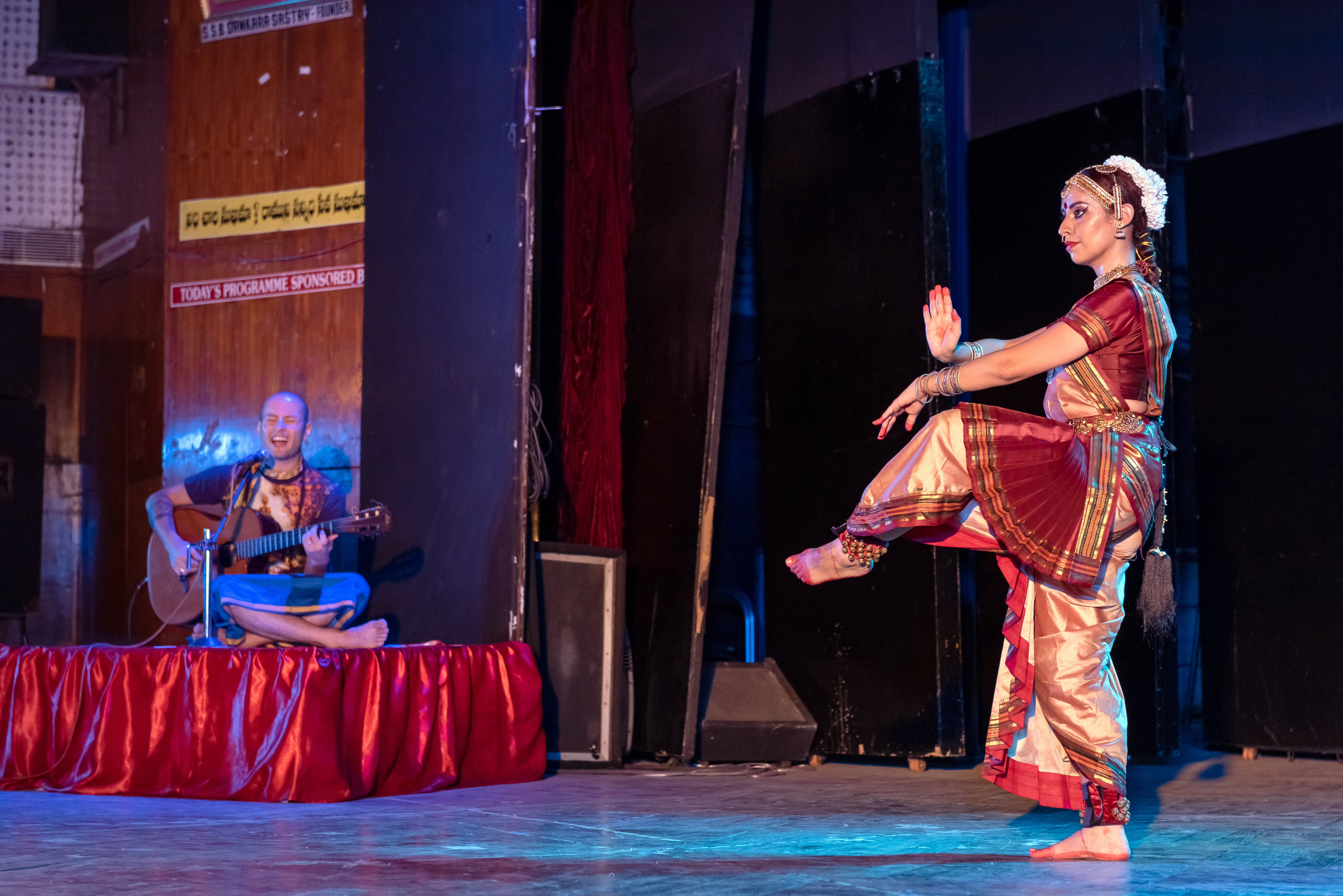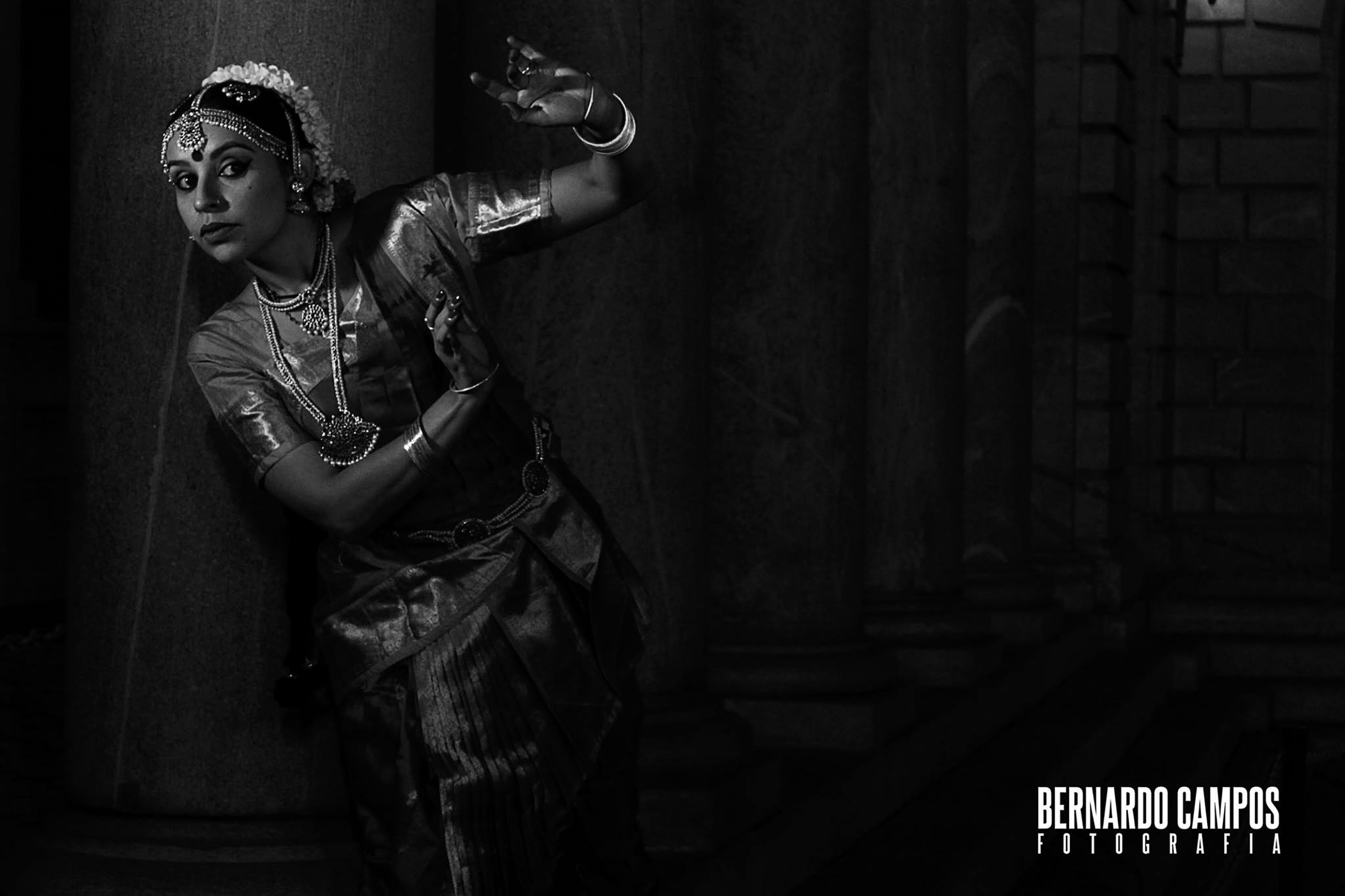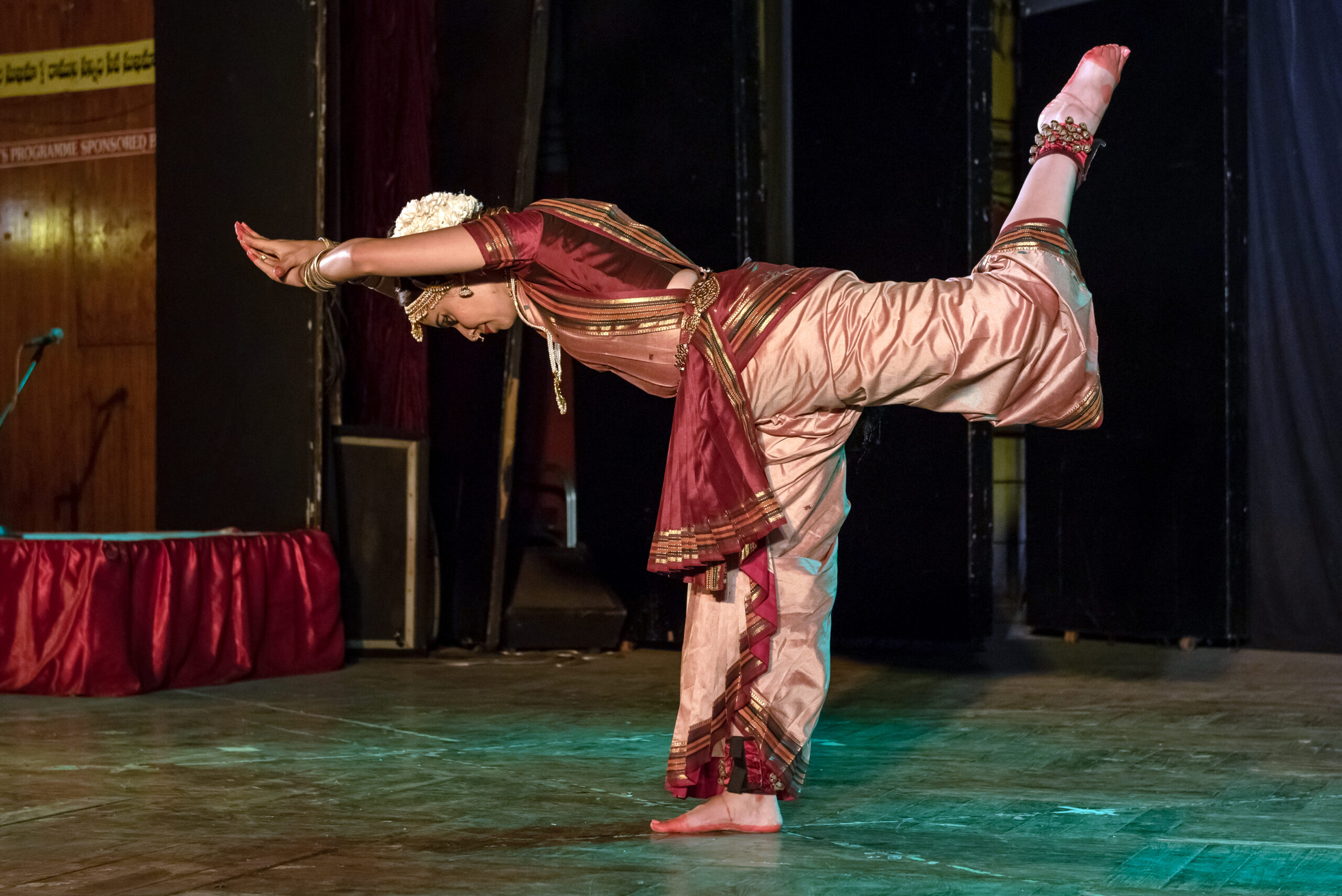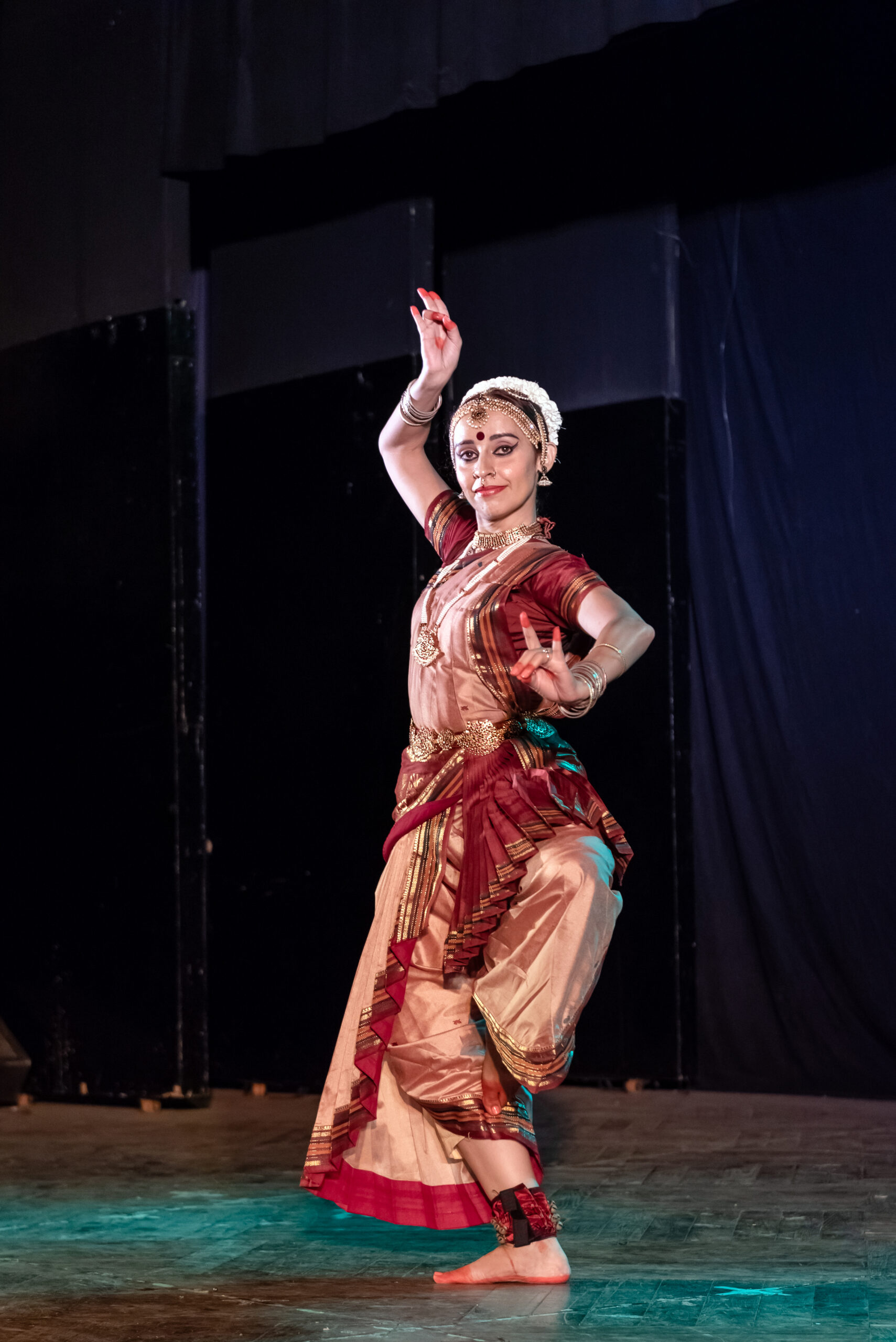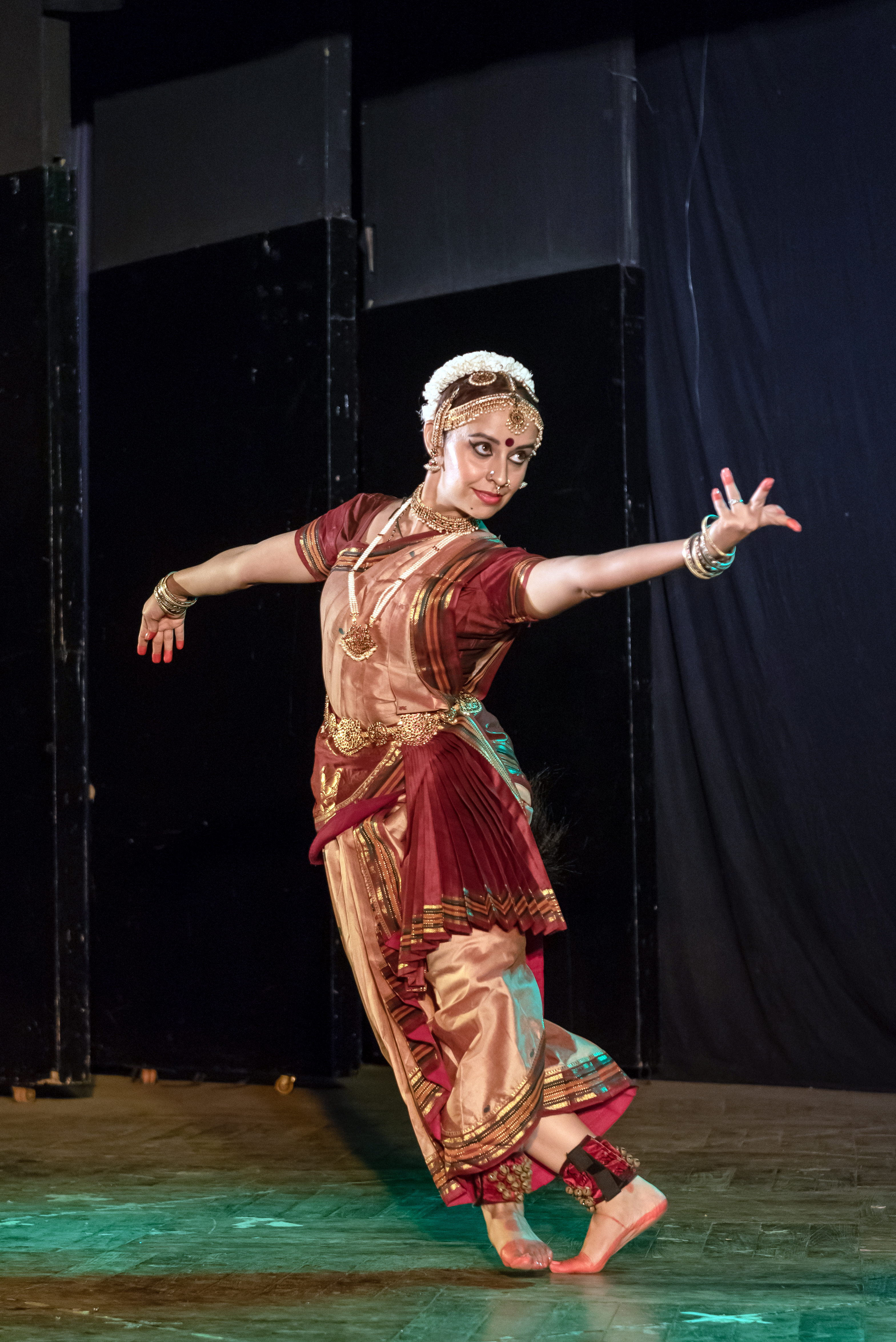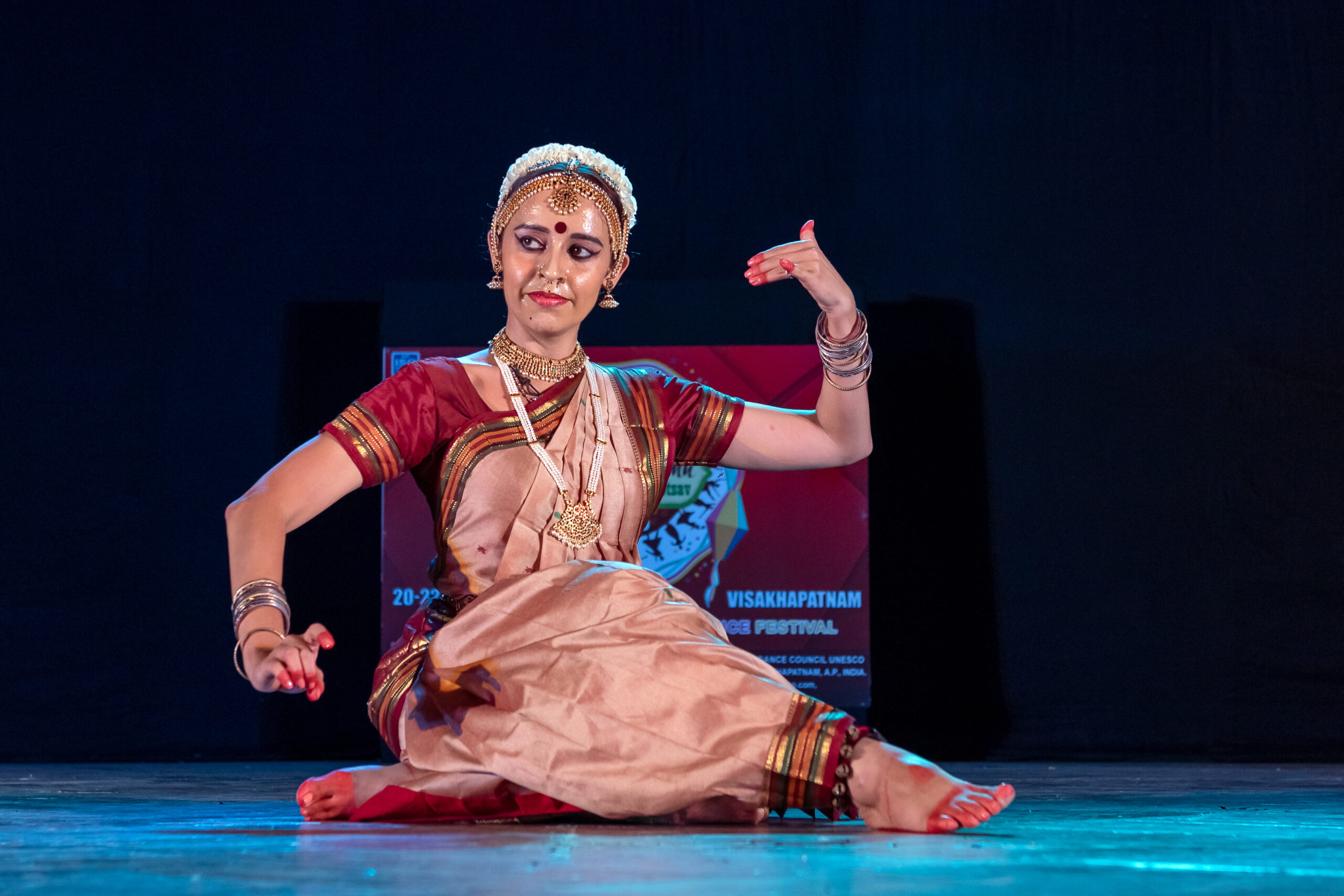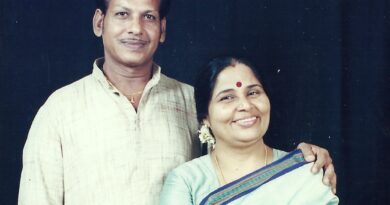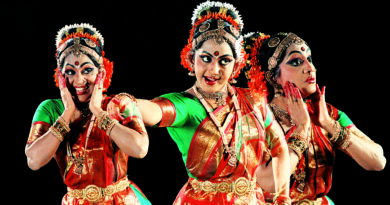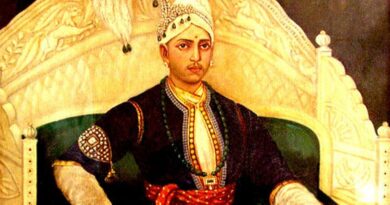Kamalaksi Rupini: A Brazilian who embraced Indian Art & Culture
Kamalaksi Rupini: A Brazilian who embraced Indian Art & Culture
Text and Pics: Paul Nicodemus
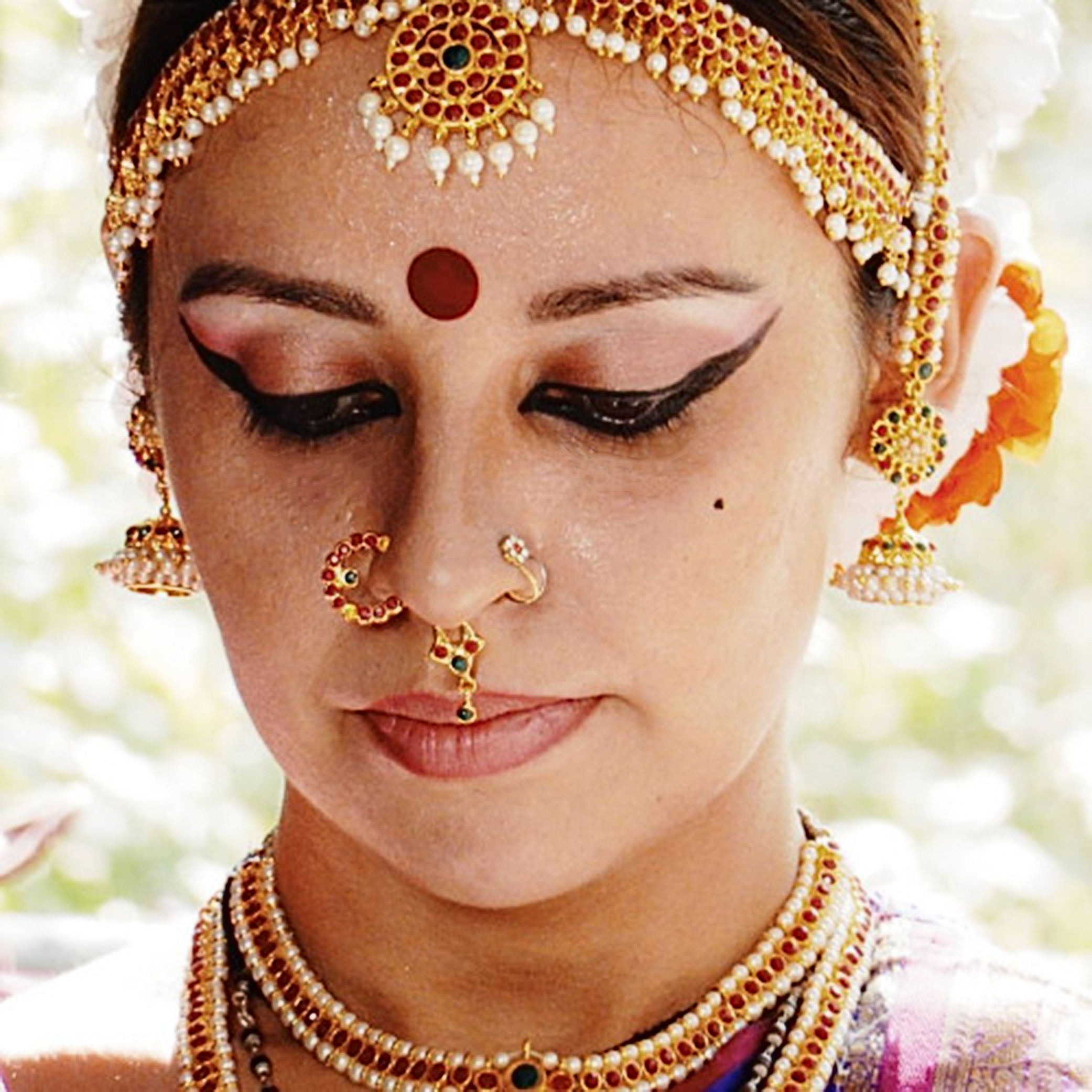
Indian Classical Dance forms have been revered across the world. For many years, they have had a transcendental effect on people who got in touch. Some passionate souls get attracted, erase boundaries and embrace them. In a classic example, Kamalaksi Rumpini, an artiste from Belo Horizonte, Brazil mesmerised by the depth of Indian Classical Dance not only embraced Bharatanatyam but also its philosophy. She swept the Indian audience of their feet with her fluid movements and effortless grace at a recent International dance festival held in Visakhapatnam. Here is her fascinating tryst with Indian Classical dance and its deep culture. Karen Veloso, aka Kamalaksi Rupini, is a multi-talented artiste. Her Indian connection happened at the age of 3 when she started practising Yoga with her mother. Her family is a native of Brazil and they have no Indian connection except for the fact that her mother was a Yoga practitioner. Her mother researched different alternative therapies and her father was a bank employee. As a kid, she accompanied her mother to the Yoga class as there was nobody to take care of her at the house. “Somehow, I got interested in Yoga and practised it all the time,” she says.
As time progressed she got into the philosophy of it and started working on both mind, body and soul. Around the age of 8 years, looking at her elder sister learn Classical Ballet, she too began learning the art form. Later on, that lead her to learn Modern Ballet and different other dance forms like contemporary dance, dance theatre, capoeira, contact improvisation, belly dance, middle east folk dance, ballroom dance and others. She loved both yoga and dance but deep down she felt something was missing – like a character and story. She began to look for a medium to convey something through the art. So she got into theatre and acting but still, nothing seemed complete. Yoga felt lonely, dance had movement but did not give her enough scope for emotion and theatre felt superficial.
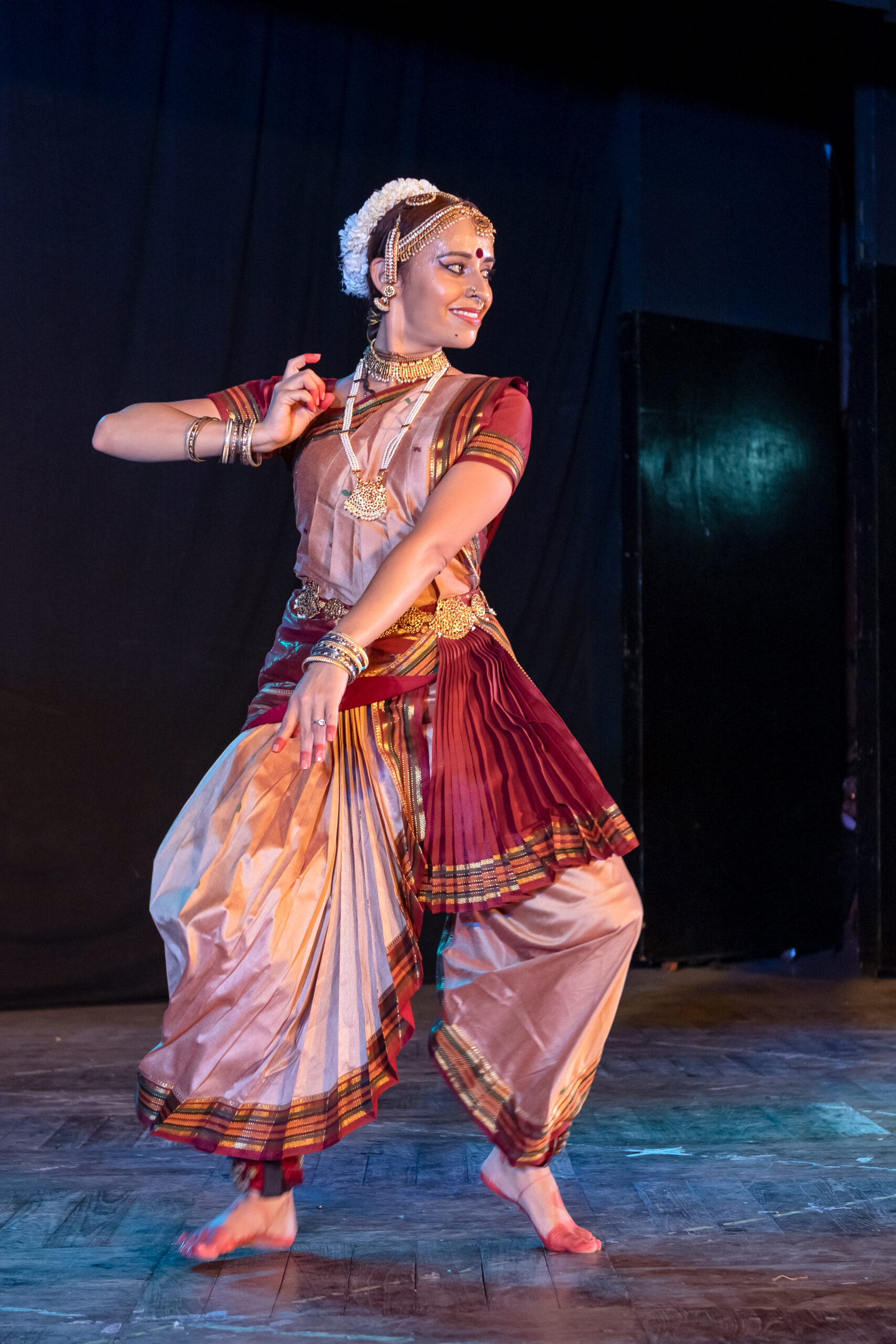
A little after she started learning dance, she began her training in theatre and acting. The theatre took her to act both in theatre and movies, and also took her to teach and working in different roles in movies, like coaching actors, producing, working on art direction. The cinema world made her embrace another passion, which is writing. She wrote many scripts for movies and a book for kids who got the second place in a national competition. On the other hand, the strong influence of dance took her to hybrid arts, such as dance-theatre, and the study of physical actions in acting. Apart from that, she continued dancing and researching on pure dance as well.
She finished her graduation in performing arts from a reputed State university, UFMG (Universidade do Estado Federal de Minas Gerais) in Belo Horizonte, Brazil and began searching for something that could put everything together, Yoga, Dance and Theatre. At the University, they had workshops and people coming from abroad. At times, people from India visited the University to conduct workshops. On one such occasion, she watched Indian classical dance and felt that it had all the elements that she has been searching for over the years. Her first taste of Indian dance came through an Italian researcher who worked with anthropological theatre in various countries. Reading his books, she got in touch with Indian dance forms. From then on she picked interest in knowing about Indian dances, read books and attended workshops on Indian dances.
In 2000-01, she travelled to a city in southern Brazil for the New Year celebrations and came to know about a Bharatanatyam performance by Eliza Pierim through a television channel. She immediately decided to watch the performance. After the programme, she went and spoke to the dancer. On her request, Eliza agreed to teach her. She was excited and immediately called her mother to inform that she would be living in southern Brazil for the next 6 months instead of 1 week. Such was her dedication.
For the next 4-5 years, Kamalaksi frequently visited the dancer and sometimes she would come and teach at her place in Belo Horizonte. Eliza was a dancer and actress and learnt from a guru from Kalakshetra, India. One day, she told Kamalaksi that she has taught her whatever she could and advised her to go deeper by learning from a seasoned guru. In 2007, she landed in Bangalore and met Guru Bhanumathi. She started training under her and since then she has been visiting India every year to learn and perform.
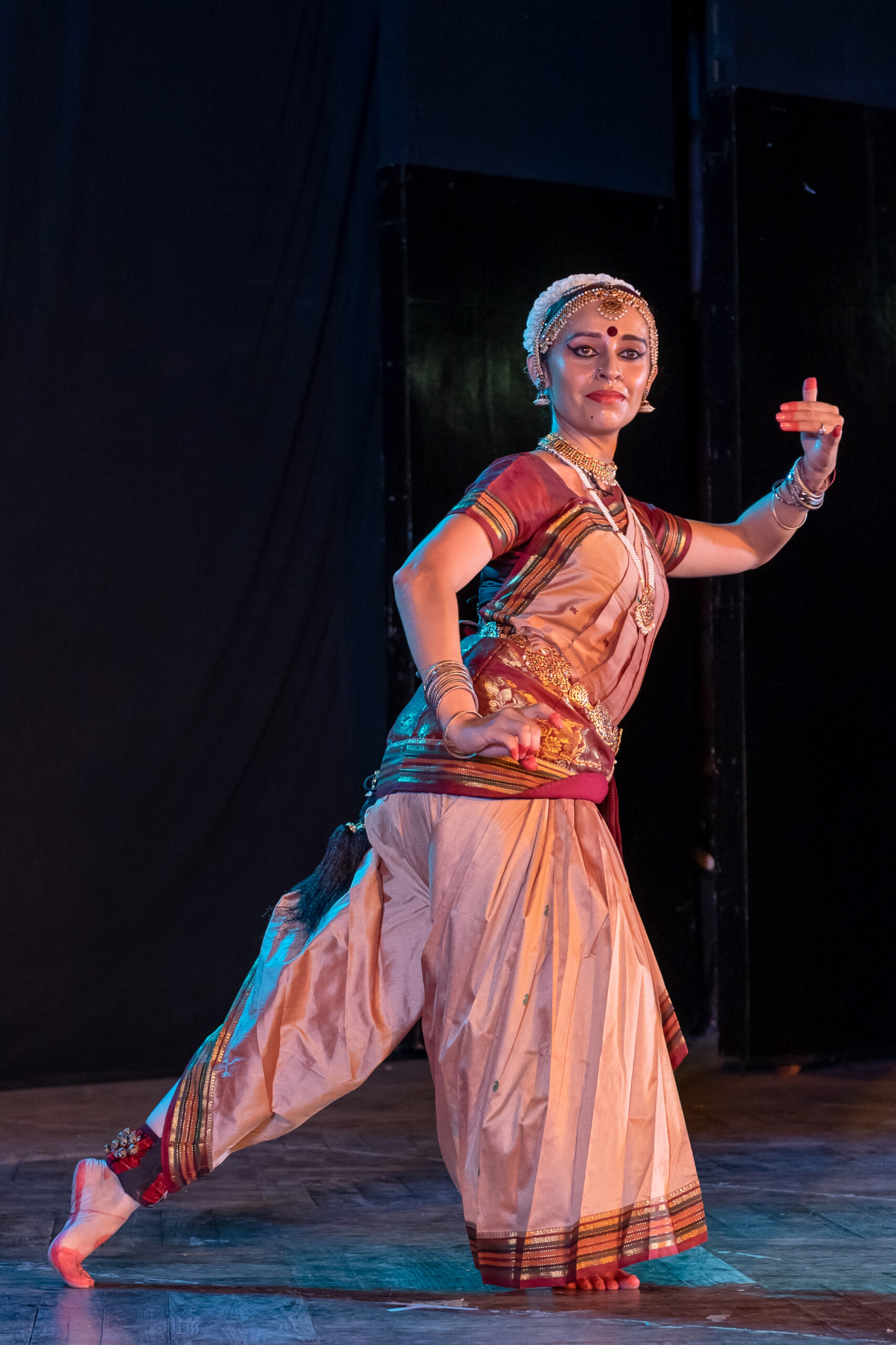
Bharatanatyam provided her with a perfect platform to combine yoga, dance, theatre, and philosophy. She was trained by Guru B Bhanumathi in Bangalore and Guru Sivagami Vanka in Portland, USA. She has also learned from gurus such as Mithun Shyam, Bangalore and the devadasi Kanagambhujam, Chidambaram. She has been showing the Indian dance in many places all over Brazil, where she lives, and she also does a fusion of Indian dance with Brazilian music, working with Bruno Tonelli, her partner and musician from Brazil.
She completed her Graduation course in Performing Arts with an emphasis on teaching. But after coming to India, staying here and learning dance, she went back and completed her Masters in Performing Arts from the same university in Brazil. She chose ‘Indian Classical Dance according to Guru, Sadhu and Sastre’ as her topic of research. “It was important for me to work on this topic in Brazil because Indian dance was not popular in the country,” she says. In the years that followed, she extensively studied dance with the help of Natyashastra and her guru. She learnt that Indian classical dance goes beyond the movement and there is much more to it that sustains. She wrote many academic articles and spoke in different International Congresses.
Looking deep into the tradition of Indian Classical Dance and after studying Natyashastra, she says that what generally is perceived as tradition nowadays is not that traditional. Initially, she was apprehensive about fusion and collaborating with Brazilian musicians. Her Bharatanatyam performance to the rhythm of the guitar might not be considered to be traditional. Then she questioned herself about what would be traditional? She justifies and says that it should not be an issue. “Guitar is new and it is not considered traditional. We see a lot of Indian dancers perform to the violin but if you look deeper, the violin is not an Indian instrument and it is not traditional. When we go back in time, study Natyashastra, we will know that what we call traditional now is something that has been in use for some time but not exactly original,” she explains. Natyashastra says that arts are meant to elevate people’s consciousness. “If the movements of the style, rhythm, bakti and stories are present then there should not be a problem. But some videos on youtube show Bharatanatyam being performed to songs like Despacito, that is definitely wrong. It is not Bharatanatyam. What we bring to the consciousness of people, for me is the real tradition,” she says.
Her passion for arts made her produce many festivals in Brazil. She has performed her dance in many cities in Brazil, such as São Paulo, Rio de Janeiro, Belo Horizonte, Brasilia, Fortaleza and others. She extensively performed Bharatanatyam across India and Brazil at most of the prestigious venues. Her recent performances in India include Sathyabhama Yuva Nrithyotsav 2018, Visakhapatnam; Jagannath International Festival, Bhubaneswar; Natyanjali Festival, Chidambaram, Natyanjali Festival, Karur; Mood Indigo, Mumbai, and many others. Her recent performances in Brazil include Noite Oriental, Belo Horizonte; ‘Natya’ dance performance, Espaço Ananda Marga, Brasília; ‘Natya’ dance performance, Park Yoga. Brasília; ‘Natya’ dance performance, Espaço de Yoga Om Shanti. Brasília; ‘Puja’ dance performance, Belém, Production and performance in the International Festival Magic India, Belo Horizonte; ‘Noite Indiana’, Belo Horizonte and many others. She has performed Mohiniyattam under the guidance of guru Sreedevi Unni in Kerala, with the Monisha Arts Group.
Some of her awards include Sathyabhama Award, Sathyabhama Yuva Nrithyotsav 2018, Visakhapatnam; Mahendra Kumar Swain International Award for Culture, Bhubaneswar, India; Nritya Ratna, Cuttack, India; Nritya Sree, Baroda, India, Gundica Rani Memorial Award, Delhi, India.
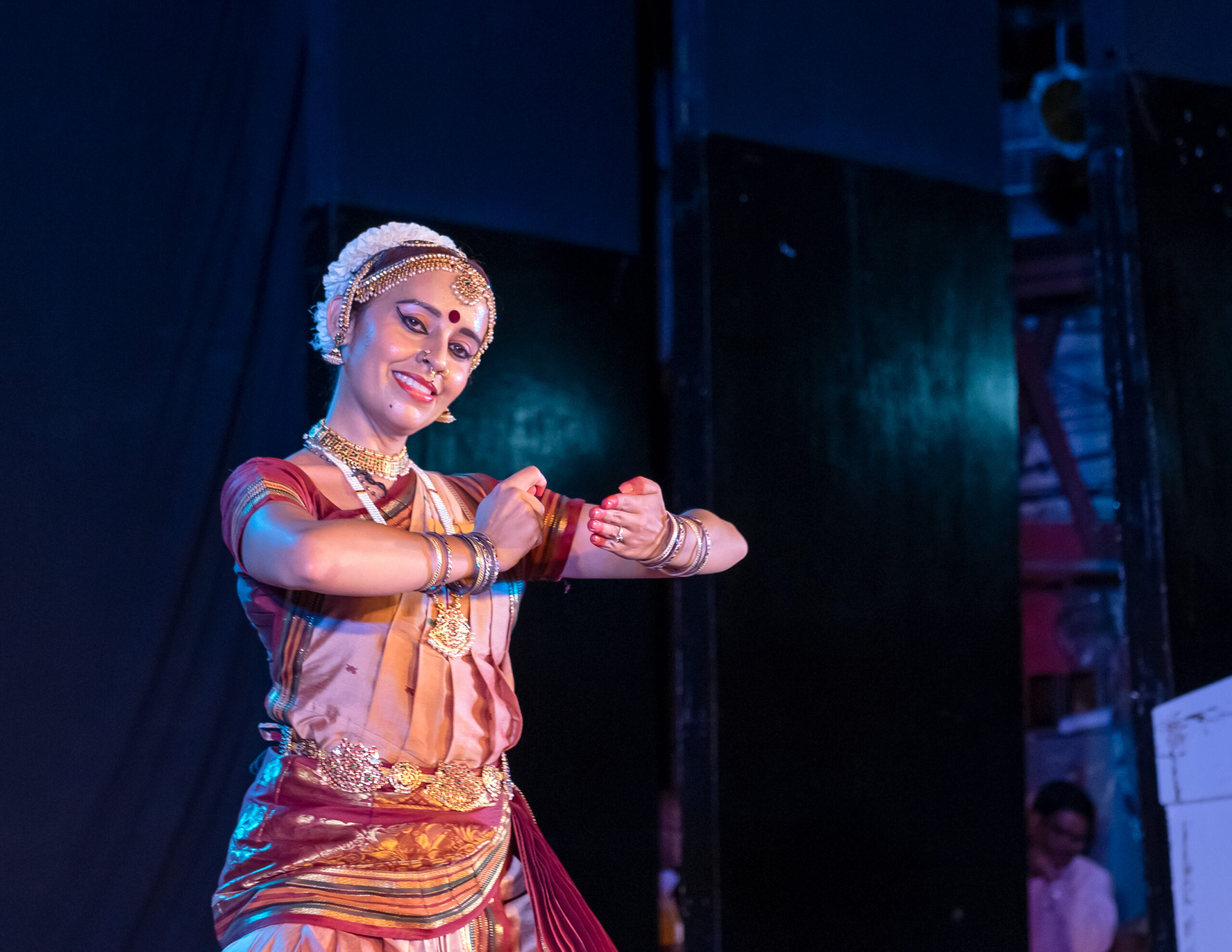
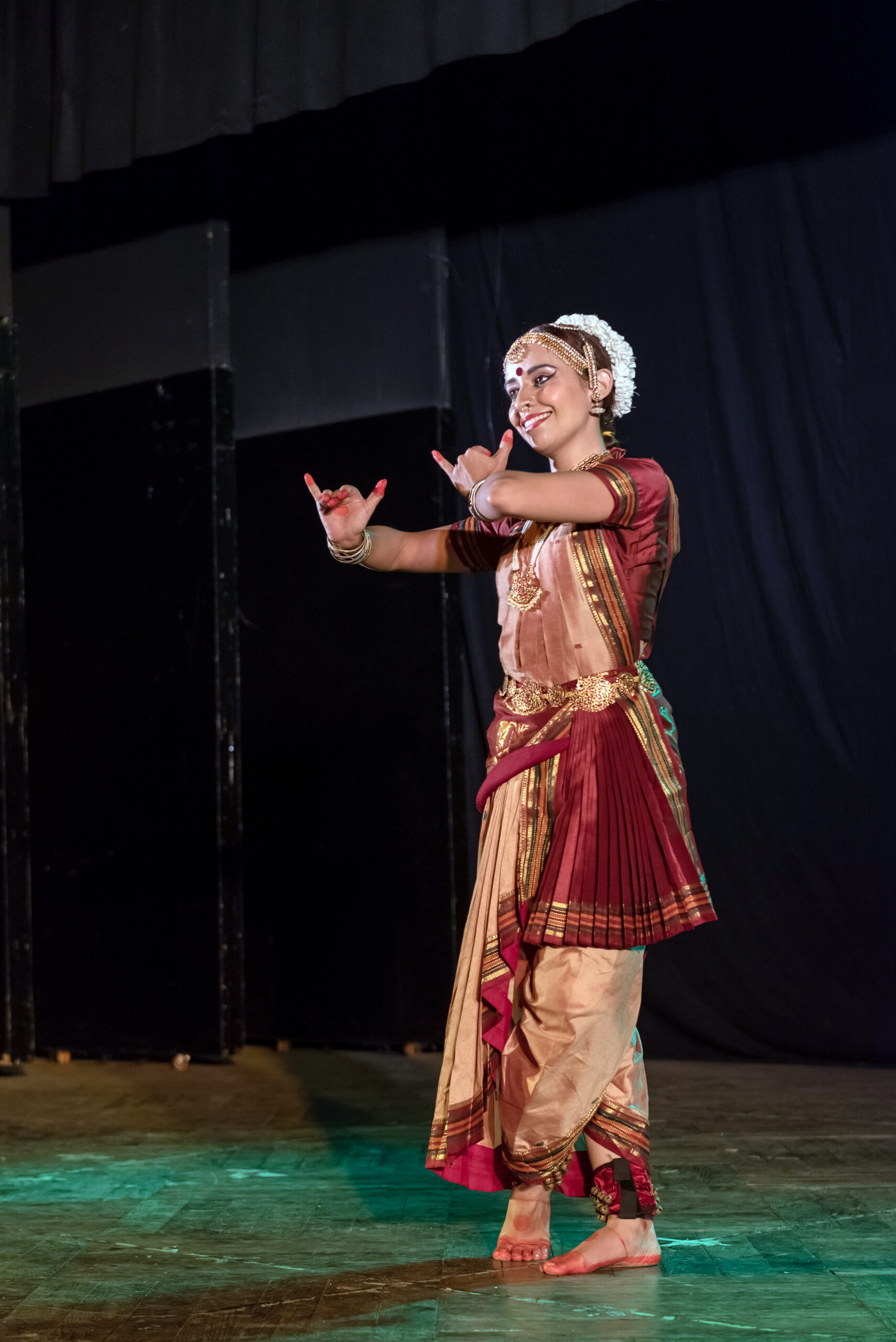
She has been an Artistic Director of the Ratha Yatra Festival, Belo Horizonte, Brazil and Cultural producer at the cinema production company 108, Belo Horizonte, Brazil, since 2009. She acted as the producer of the Magic India – International Spiritual Festival, Belo Horizonte, Brazil in 2017 and 2018.
She is a member of the group “CRIA – Arts and Transdisciplinary”, coordinated by Dr Fernando Antônio Mencarelli, from the Federal University of Minas Gerais (UFMG). The group produces International Congresses twice a year, bringing different important artists and researchers on dance and theatre, producing also many written materials and promoting practical studies since 2015. She also a member of the group “NEHVA – Núcleo de Estudos Sobre Hinduismo e Vaisnavismo” coordinated by Dr Ricardo Sousa Silvestre from the Federal University of Paraiba (UFPB) since 2015. She coordinates the group “Interculturalism and Indian Dance” with dancers, actresses and musicians from different backgrounds and Universities.
Kamalaksi has also been an accomplished academic speaker. She spoke on her research regarding Indian classical dance done in her Master’s along with a practical and technical demonstration at the Faculty of Theatre and Dance of the Federal University of Pará (UFPA), Belém, Brazil, 2017 and on the article “Indian dance as a way of life” at the CEI – Centro de Estudos Indianos da UFMG (Center of India Studies of the Federal University of the State of Minas Gerais), Belo Horizonte, Brazil, 2017. Earlier, spoke on numerous other topics at varied venues.
She has been teaching various western dances and acting since 2000 and Bharatnatyam since 2009. She known for conducting workshops. Her recent workshops include “Introduction to Indian dance” at Casa Kwan Yin. Brasilia, Brazil, 2017, “Introduction to Indian dance” at Casa das Artes. Belém, Brazil, 2017, “the voice of the body” in the storytelling workshop Ateliê de Narração de Histórias Sabenças e Encantos do Era Uma Vez coordinated by Nadja Calábria, Belo Horizonte, Brazil, 2017.
Every year she has been visiting India to learn more about the rich cultural heritage. She considers India as a great treasure house of ancient culture and describes her visit to Chidambaram a couple of years ago as her most memorable and humbling experience in life. In the days to come, along with her partner, Bruno Tonelli she desires to propagate Indian dance, culture and philosophy through a multimedia project.
Gallery :
